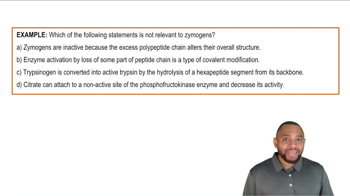Refer to the graph in problem 16.45 to determine if the reaction rate in each condition will be at the optimum rate or not.
<IMAGE>
a. trypsin, pH 5.0
 Verified step by step guidance
Verified step by step guidance Verified video answer for a similar problem:
Verified video answer for a similar problem:



 1:6m
1:6mMaster Factors Affecting Enzyme Activity Concept 1 with a bite sized video explanation from Jules
Start learning